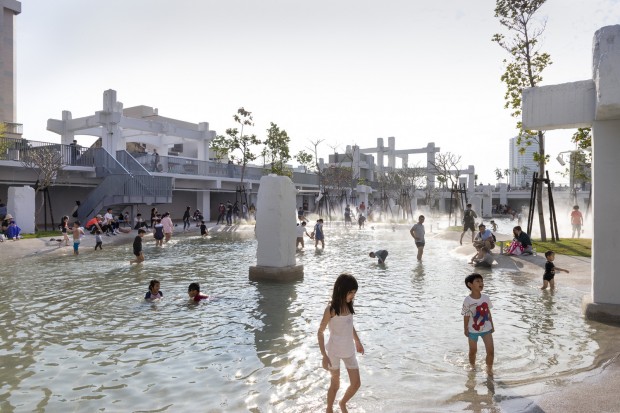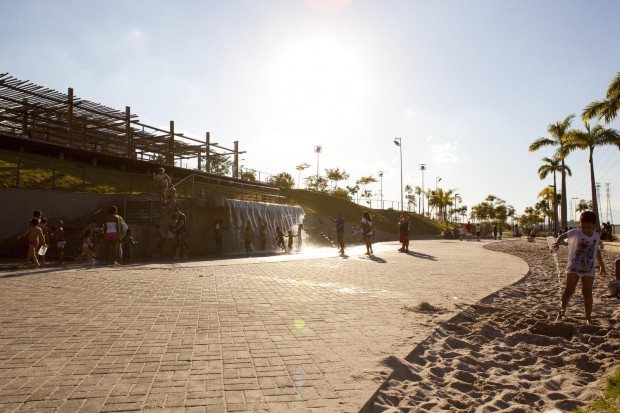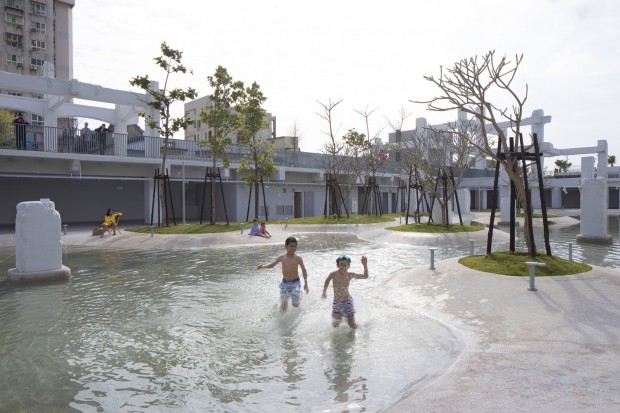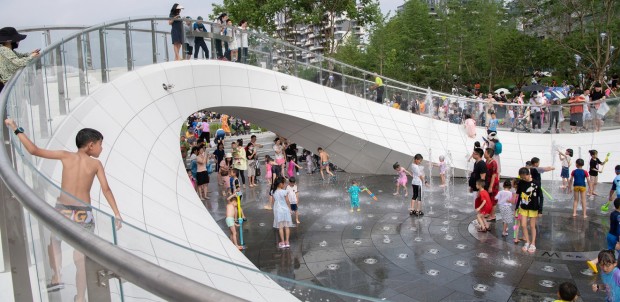Establishing a water park in public areas may be perceived as a waste of resources by some people. However, do you know that this form of attraction has several advantages? According to a study, it is possible to reduce the dust in the air by as much as 80% by using spraying systems that combine air and water. These methods significantly contribute to the overall reduction of dust present.
Moreover, in the era of climate change, which we are presently experiencing, water resources have the potential to serve an essential role in cooling the environment around them, contributing to the reduction of the urban heat island effect.
Thus, learn more about some cutting-edge urban park projects utilizing water resources, which will surely grab your attention.

(Photo : ArchDaily/Daria Scagliola )
1. Shenzhen Shenwan Street Park (China)

(Photo : ArchDaily/Tianpei Zeng)
The park is distinguished by its established public space system, which includes a variety of green spaces, a neighborhood welcoming to pedestrians, and a slow-traffic infrastructure.
Reusing the rainwater collected for greening irrigation and replenishing water features is now possible in the park due to the environmentally friendly water storage and purification solution. By converting the strength of the wind into motion energy, an iconic windmill can pump rainwater collected in the marsh into the aqueduct, which serves as the beginning point of the waterscape. As part of the project, an evident sponge landscape system that encapsulates the concept of a sponge city has been implemented.
2. Parque Madureira (Brazil)

(Photo : ArchDaily/Bianca Rezende)
The Parque Madureira, which encompasses over 93 thousand square meters, qualifies as one of the largest parks in the city. As mentioned, there are 800 native trees, 50 palm trees, flowers, and 31,500 square meters of grass, which combined constitute a heavily wooded region. The park incorporates environmentally friendly procedures into its day-to-day operations, including the management of solid waste, the utilization of rainwater, the collection and utilization of solar energy, and the utilization of energy-saving lighting.
Also Read: Hidden Threats of Aging Asbestos Water Pipes on Construction Workers
3. Tainan Spring (Taiwan)

(Photo : ArchDaily/Daria Scagliola )
By re-establishing a connection between the city and its waterfront and nature, the Tainan Spring public space design entails the conversion of a former city-center retail mall into an urban lagoon surrounded by nascent vegetation that will eventually mature into a green jungle. Accordingly, enhanced public walkways, a reduction in traffic, and the incorporation of native flora are all components of the design, which also involves the construction of a new public square and an urban pool.
4. Waterline Park (China)

(Photo : ArchDaily/Bing Lu)
The challenge that Waterline Park had to overcome was an ugly, lengthy gutter that faced residential apartment blocks on each side. Although lacking in aesthetic appeal, this invaluable public space remained accessible to the locals. With much activity, the project intended to transform this lifeless area into a vibrant community space.
5. Henning G. Kruses Plads (Denmark)

(Photo : ArchDaily/Rasmus Hjortshøj)
Henning G. Kruses Plads is designed to extend the existing Musikhus architecture, honoring Utzon's original plan. The pillars seamlessly blend with a birch forest, smoothly transitioning from the foyer to the Havnegade beachfront. In addition, the area now features a birch forest and a cymatic lake, inviting people to gather and enjoy.
Furthermore, to keep the water moving, a 10-meter spherical basin in the birch 'forest' responds to music from the building's stages. The water represents the ocean and is a tribute to Kruses' work worldwide.
Related Article: 6 Innovative Ways to Transform the Construction Industry Toward a Sustainable Future







